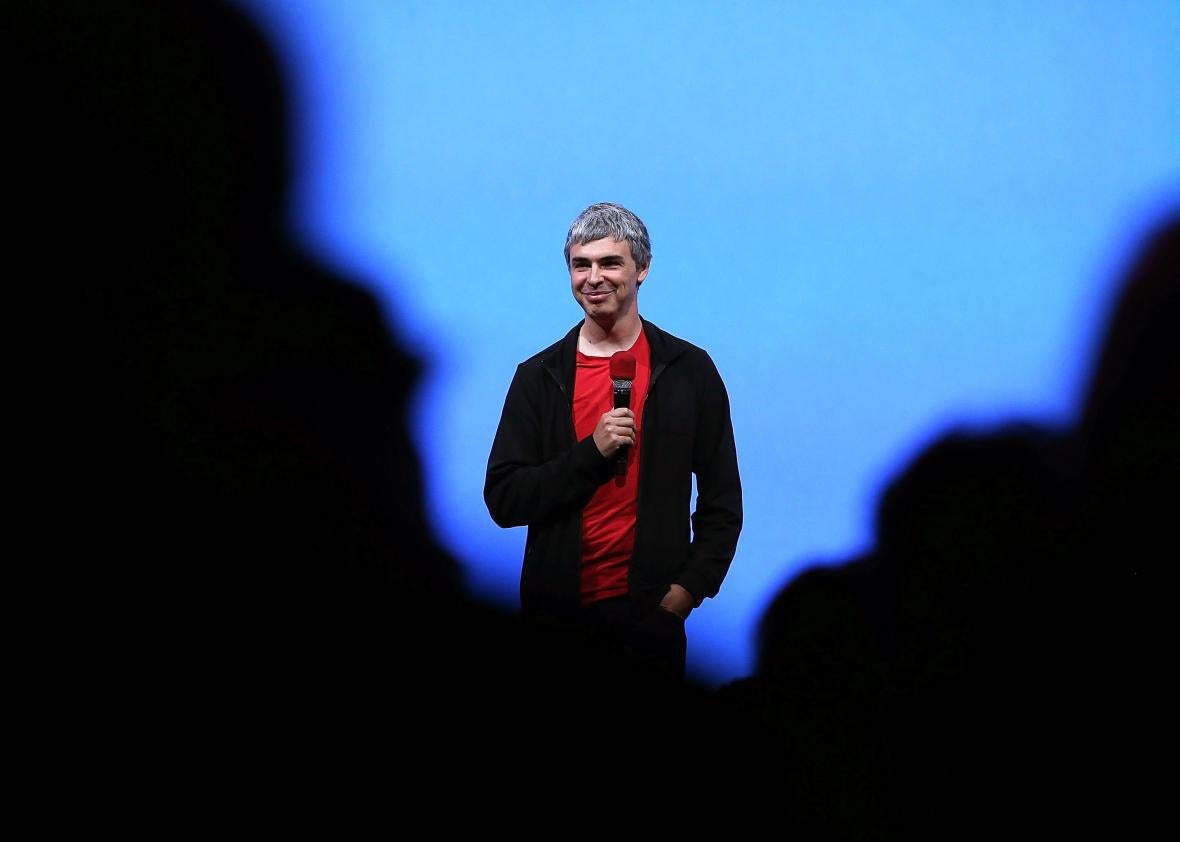If you were trying to make flying cars, would you want the world to know? That’s the central question emerging from a richly reported Bloomberg Businessweek story that claims Google co-founder Larry Page has been funding Zee.Aero, a startup aiming to bring small personal aircraft to market. Though the company has been cloaked in secrecy for years, Bloomberg’s Ashlee Vance and Brad Stone claim that Page owns the company—and he’s already spent more than $100 million on it.
Bloomberg’s reporting on the story, which is worth reading in full, is rife with charming, weird details that could populate an especially goofy Silicon Valley episode, but also speaks to the difficulty of getting the scoop: For example, Zee.Aero issued its employees “wallet-size cards with instructions on how to deflect questions from reporters.” (There’s no indication in the story whether the cards included directives on discussing the cards with reporters, which some employees clearly did.) The employees also seem to be personal aircraft enthusiasts—for example, one group competed in Flugtag, Red Bull’s annual human-powered flying machine event, while wearing “full-body baby-chick outfits.”
Despite his sizable investment, Page has heretofore concealed his involvement, which is the real revelation of the article. According to Vance and Stone, Zee.Aero employees referred to Page as GUS, the “guy upstairs.” Likewise, employees of the airport the company uses for test flights “haven’t heard Page’s name mentioned, but they long ago concluded Zee.Aero’s owner is super rich.” What’s more, “Page once vowed to a colleague that if his involvement in the sector ever became public, he might pull support from the companies.”
The reasons for this secrecy aren’t entirely obvious (and Page has not yet weighed in on the article), but one might conclude that it’s related to the inherent silliness of flying cars. Like marketing hoverboards or jet packs, trying to sell the world on flying cars risks seeming like a ludicrous endeavor. Vance and Stone claim that the “project is deeply personal” for Page and their sources suggest he has “serious expectations” for Zee.Aero. Nevertheless, it’s entirely possible that he wants to avoid attaching his name to it until he has something to show for his investment, lest it be mocked as a quixotic waste of capital.
That said, there’s plenty of reason to believe that Page’s investment might pay off: His aeronautics engineers already have working prototypes of some of their vehicles. One downside is that “they sound like air raid sirens” when they take off, which presumably makes it harder to keep them out of sight. According to Bloomberg, airport employees have spotted two in action: “Both have a narrow body, a bulbous cockpit with room for one person upfront, and a wing at the back.” They still might not warrant the name of flying car, as they don’t have wheels and aren’t designed to function on roads. They do, however, apparently work.
Equally important may be some of the people Page has brought into the field, and the technologies they represent: He also reportedly funds Kitty Hawk, a separate flying car startup that is “working on a competing design,” that supposedly “resembles a giant version of a quadcopter drone.” Sebastian Thrun, one of the most successful pioneers of self-driving car research, serves as Kitty Hawk’s president.
If flying cars seem ridiculous, it’s largely because it’s hard to imagine ordinary, untrained civilians piloting them. But self-driving technology would go a long way to alleviating such concerns. Indeed, Vance and Stone quote Mark Moore, a NASA engineer who believes, “Self-flying aircraft is so much easier than what the auto companies are trying to do with self-driving cars.” That’s presumably because there are fewer factors to consider—a self-flying car doesn’t have to look out for stop signs or understand various roadway markings—even if there are more dimensions in play.
Whether or not Page’s plans come to fruition, it’ll still be some time before we see such technologies on the market. Vance and Stone acknowledge, “There are still technology problems to solve, regulatory hurdles to cross, and urgent safety questions to answer.” Nevertheless, their reporting still suggests that Page has nothing to be ashamed of now that his secret is public knowledge.
